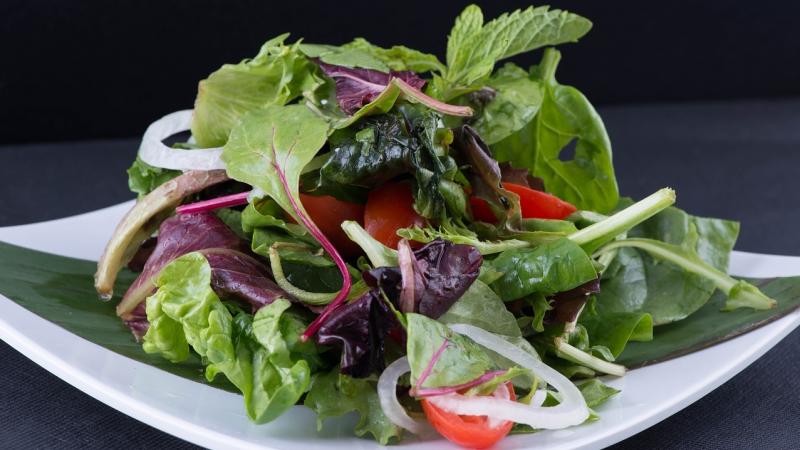
Green leafy vegetables like lettuce, kale and spinach brim with the goodness of healthy nutrients. However, sometimes, there is someone unwanted lurking—the pathogenic bacteria Salmonella that causes food poisoning. Salmonella is found in a range of food products like meat, egg, vegetables and processed foods. While it was thought that unhygienic practices followed during shipping and handling these food products could contaminate them, we now know that vegetables could carry the pathogen even before harvesting! In a recent study, researchers from the Indian Institute of Science (IISc) and the University of Agricultural Sciences (UAS), Bengaluru, have explained how Salmonella enters a growing plant from the soil.
Most plant pathogens enter the plant by breaking the cell walls of plant cells with some enzymes. Instead, Salmonella looks for existing openings in the plant body to creep in. Aerial openings, like stomata in the leaves or cracks on the fruits, can make it easier. But, for Salmonella found in the soil, these opening are of little help and entering through the roots is not as easy since there are no such openings. In the current study, published in the journal BMC Plant Biology, the researchers detail how the pathogenic bacteria enter through roots. The study was partially funded by the Department of Atomic Energy, Department of Biotechnology, Department of Science and Technology, University Grant Commission, and Indian Council of Medical Research.
Previous studies have indicated that the areas in the roots, from where lateral roots emerge, could pave the way for the entry of Salmonella. Lateral roots are horizontal extensions of the primary tap root, which grows vertically. The exact mechanism of this entry was not clear until now. In this study, the researchers show how lateral roots help in their entry and also explore how additional factors, like salt concentration in the soil, affect this process. They used tomato and thale cress (Arabidopsis thaliana) to understand these processes.
“When given an equal opportunity to colonize the plants with high or low lateral roots, Salmonella internalization was found higher in the plants with more lateral roots”, say the authors about their observation. The bacteria make use of the cavity created when the epidermis, or the outer layer of the primary root, remodels when the lateral roots emerge. The bacteria enters the plant through these cavities. Once they are inside, they risk reaching edible parts like the leaves or fruits. “Our results suggest that plant roots not only become susceptible to Salmonella invasion but also enhance its transmission to the aerial edible organs”, add the authors.
The researchers showed that various other factors might influence this entry process. When they artificially increased salt concentration in the soil, the number of lateral roots increased, leading to a higher number of bacteria in the plants. The researchers point out such soil stress factors could play a significant role in this process, and they plan to study the interaction between Salmonella, plant, and soil stress factors in the future. They are also interested in exploring the role of soil-dwelling beneficial organisms in the colonisation process of Salmonella.
The study highlights the potential risks of consuming contaminated vegetables, particularly in its raw form. Finding ways to prevent the contamination of agricultural land might help to address this emerging problem.






